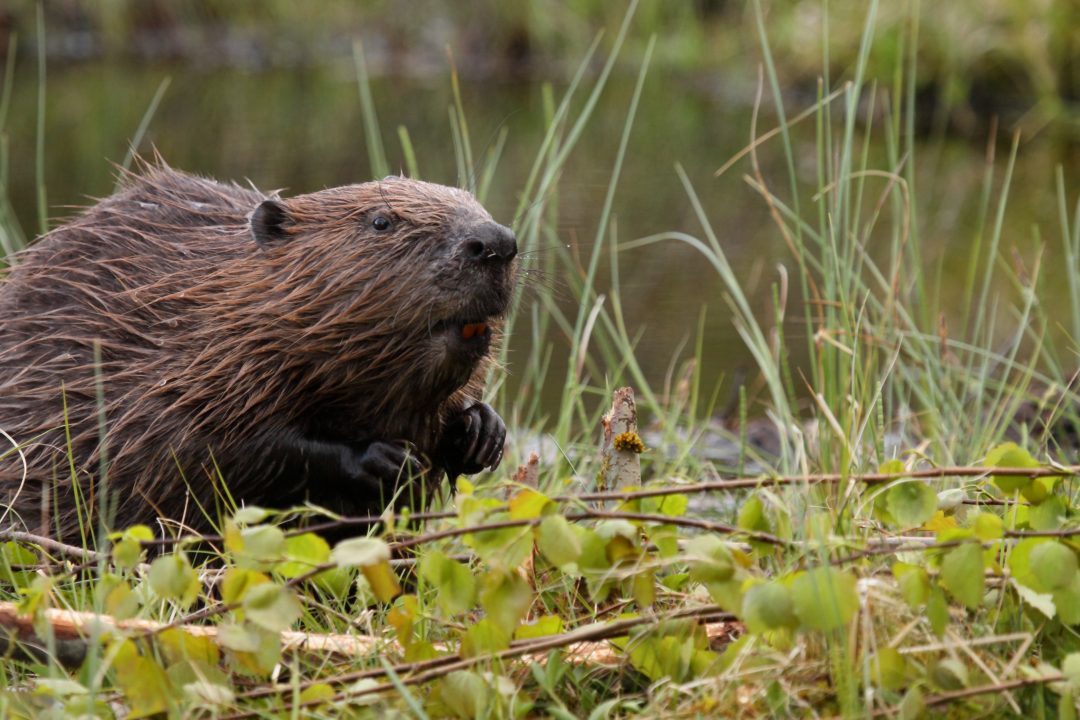Beaver numbers in Scotland have more than doubled in the last three years, according to a new survey.
NatureScot said ‘rapid expansion’ of the animal was underway with 1000 beavers recorded.
Research found the animals are spreading out from Tayside – where territory numbers also more than doubled to 251 – to Forfar, Crianlarich and Stirling.
And experts said the expansion will likely reach into Loch Lomond in the future.
Carried out last winter, it is the largest survey of beaver numbers and their range ever conducted in the UK.
Expert beaver surveyors searched for signs of the animals on foot and by canoe.
They found 13,204 confirmed signs such as burrows, dams, lodges, scent mounds, canal digging, and tree and crop feeding.
The survey also assessed the health and spread of the overall population, to help inform future beaver work.
Robbie Kernahan, director of Sustainable Growth, said: “Wildlife is declining in Scotland so this extensive survey, which reveals an increasing beaver population, is great news for nature in Scotland.
“Beavers play a vital role in creating and restoring wetlands where other species can thrive, reducing downstream flooding and improving water quality.
“We also hope that many people in Scotland will enjoy spotting these sometimes elusive but fascinating animals, as they become more common.”
NatureScot worked with beaver specialist, Roisin Campbell-Palmer, and experts at the University of Exeter to conduct the survey.
It is first survey conducted since beavers gained protected status as European Protected Species in Scotland in 2019.
It investigated areas where beaver sightings had been reported but not confirmed.
During the last survey in 2017, approximately 1300 km of river and loch shore were surveyed, but the recent survey covered a wider area from Fife to Loch Lomond.
Dr Alan Puttock, from the University of Exeter, said: “This survey, the biggest undertaken in Britain, combined extensive field surveys and analysis to map the spatial distribution and territory dynamics of beavers across Tayside and surrounding areas.
“Developing this methodology in what is currently Britain’s largest wild population helps provide robust and replicable means by which to study beaver populations nationally.”
Dr Roisin Campbell-Palmer, the report lead author, said: “Beavers are recognised as ecosystem engineers with important biodiversity benefits, though some impacts can be challenging alongside certain land-use practices.
“This survey will hopefully provide valuable information to land managers and policy makers seeking to maximise the benefits and minimise the conflicts associated with the return of beavers to our rivers.”
It comes as the 2020 Beaver Management Report was also published, outlining the mitigation measures undertaken by NatureScot and land managers last year to reduce the negative impacts of beaver activity, such as burrowing and dam building on agricultural land.
It found 68 active mitigation projects were progressed, with 31 beavers trapped and moved to licensed, enclosed reintroduction projects in England to prevent serious damage to agriculture.
Some 56 beaver dams were removed, and 115 beavers lethally controlled.
Mr Kernahan added: “Beavers are nature’s supreme water engineers, but we know they may cause severe problems in some areas, particularly for crops on prime agricultural land and for important infrastructure like road drains or railway lines.
“This is reflected in the number of cases where mitigation measures were needed, such as fencing and flow devices or dam removal, as well as in the number of beavers which had to be trapped and moved or controlled under licence this past year.”
Follow STV News on WhatsApp
Scan the QR code on your mobile device for all the latest news from around the country


 iStock
iStock

























